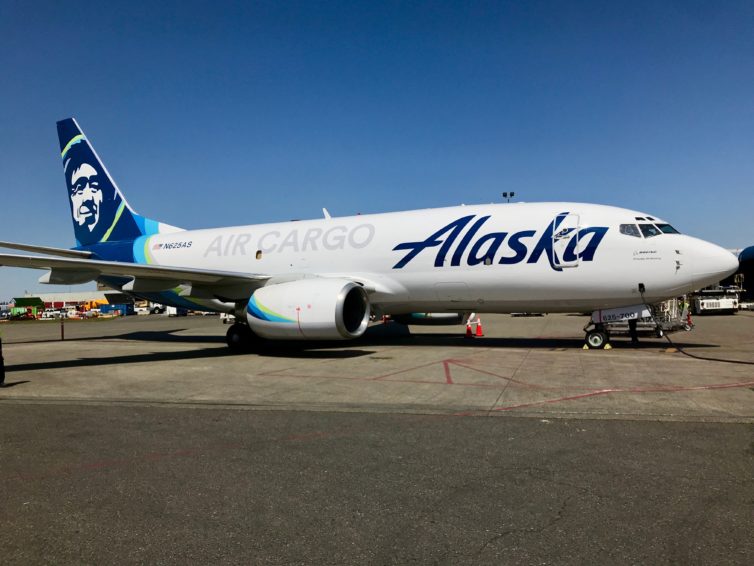
One of Alaska Airlines three newly-converted 737-700 freighters on the ramp at Seattle-Tacoma International Airport
Ever wonder about the process of loading, unloading, organizing, tracking, and planning the cargo side of a cargo flight?
Wonder no more Alaska Airlines recently invited us to watch (and then ask a metric ton of questions about) one of the airline’s new 737-700 freighters on a recent visit to Seattle-Tacoma International Airport.
“Alaska Air Cargo serves as a lifeline to many of the communities in Alaska where we fly,” said Jason Berry, managing director of cargo for Alaska Airlines.
“Offering reliable and consistent service is critical for us. The addition of our modern fleet paired with our proprietary navigation procedures allows us the ability to bring true scheduled service to the far north,” he said.
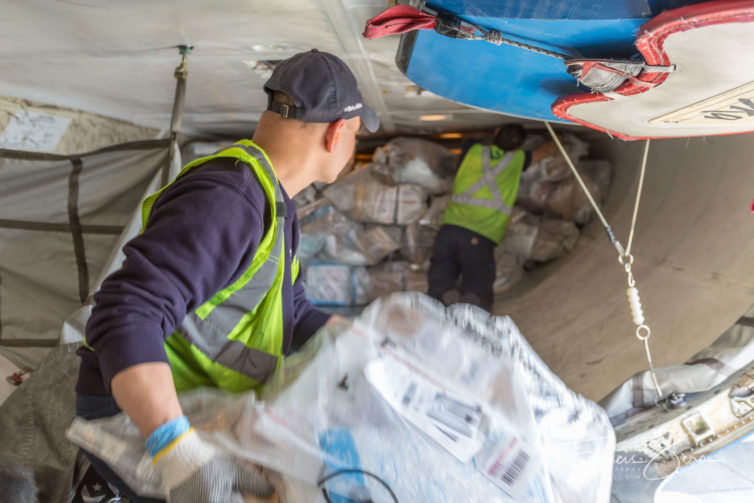
Alaska Airlines Ramp Service Agent (RSA) Carlos Arenas, foreground, prepares to pass a bag of mail to Lead RSA Metin Mehmedov. Both are working in the aft belly hold of the aircraft.
In preparation for the induction of Alaska’s first Boeing 737 MAX aircraft, the company’s strategy was to retire the remaining 400-series ’œclassics’ from its fleet. The five combis and single dedicated freighter were all 400-series aircraft.
According to Berry, those 400s were also getting extremely cycle-heavy, which meant they had so many takeoff/landing cycles that they were nearing the end of their useful life for Alaska Airlines.
“The decision to convert three 737-700 Next-Gen passenger aircraft to freighters meant we retain much of the same fleet commonality in terms of training and maintenance and it would give us the right-sized aircraft to still serve all the same communities we provide main deck cargo lift to today (-800s could not land at some of our current scheduled airports such as Adak, Kodiak, Petersburg, and Wrangell),” he explained.
And what’s become of those old cargo planes? Berry said all six were sold to leasing companies. “I believe you can find them for sale as we speak. I speculate that someone will eventually purchase the aircraft and convert them to full freighters.”
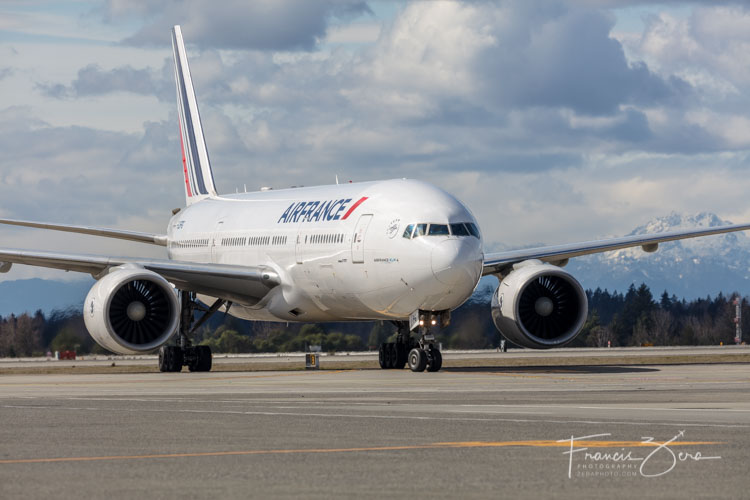
Air France flight 338 arrives at Sea-Tac Airport March 25
Following an absence of over six years, Air France is once again flying to the U.S. Pacific Northwest, using a Boeing 777-200ER with a three-class cabin for flights from Paris-Charles De Gaulle (CDG) to Seattle-Tacoma International Airport (SEA) on an initial schedule of three flights per week. Seattle is Air France’s 12th U.S. gateway.
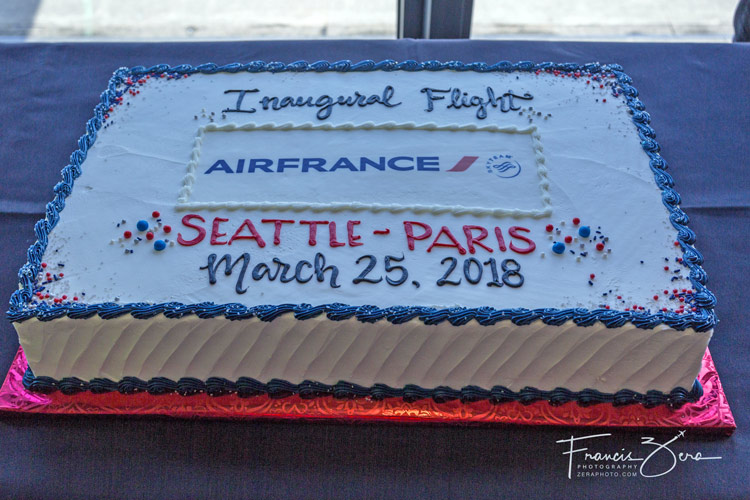
Of course there was cake
The new SEA-CDG service will operate on Wednesdays, Fridays, and Sundays, increasing to five per week during the summer peak season (June 19 ’“ Sept. 1) by adding Mondays and Tuesdays to the schedule.
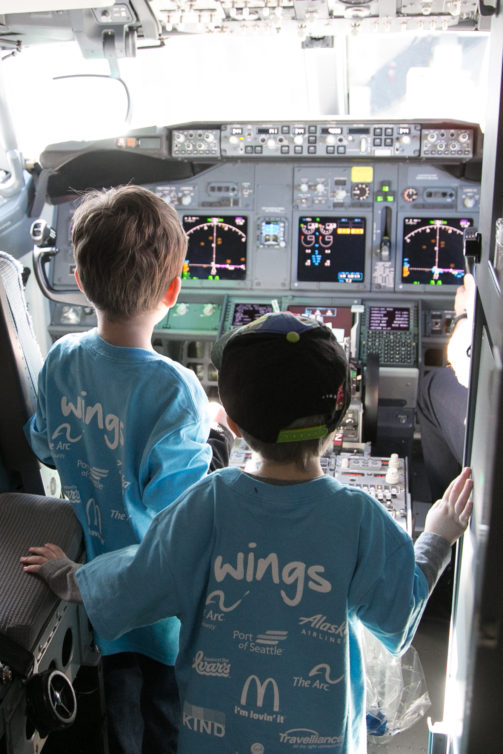
Welcome aboard! Photo: Kristin Atkinson
Your first time is something you’ll always remember. Maybe it was with the love of your life or you were even with your parents or had a close family member nearby. You may be nervous, not fully knowing what to do. Feelings of excitement, joy and even some bumps up and down happened. But a helpful hand guides you through a very exciting ride and you end up with a great touchdown.
Yes, that first time you ever fly in an airplane is pure joy and everlasting.
Yet for some, the thought of going through a crowded airport, getting into a pressurized tube with wings flown by a total stranger at speeds exceeding 500 mph, thousands of feet in the air, can be terrifying.
Thankfully there are programs at many airports to help nervous travelers.
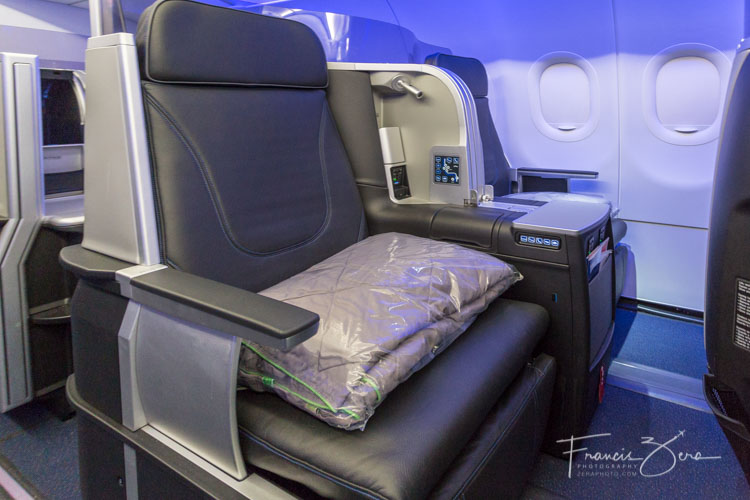
JetBlue’s Mint seating is available on certain A321s.
In the premium transcontinental game Seattle doesn’t get much attention, but things are about to change with the introduction of jetBlue’s Mint product. While the premium experience might not be the first of its type in the U.S. market, it does give Seattle a true shot at giving passengers something better than a traditional domestic first class seat for those five-to-six hour transcontinental flights.
In preparation for jetBlue’s recent inaugural flight from Seattle (SEA) to Boston (BOS), we were able to give their Mint seats a proper test-sit in the name of journalistic thoroughness.
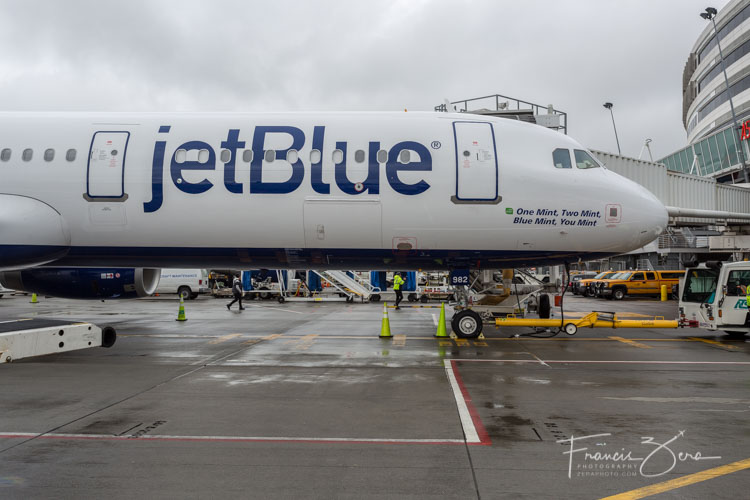
JetBlue loves to name it’s jets, too. This one is called “One Mint, Two Mint, Blue Mint, You Mint.”
The seats recline to 6’8″ jetBlue says that makes them the longest lie-flat domestic seats in the biz. Perks of the new service include gate-to-gate Fly-Fi WiFi, an extended slate of in-flight entertainment options on a 15″ seatback screen, fancy headphones, and even fancier meals from a menu that changes monthly.
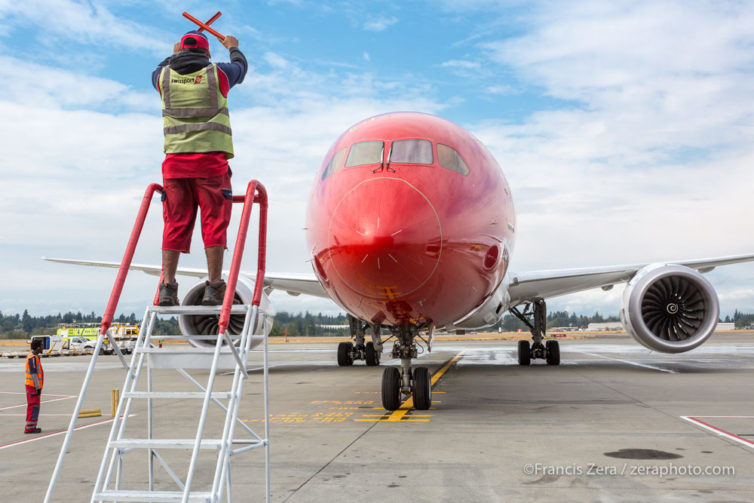
Norwegian’s inaugural flight to Seattle from London Gatwick, a Boeing 789, rolls up to the parking stand
It was a homecoming of sorts (at least for the Everett, Wash.-built 787-9) as Norwegian kicked off new 4x-weekly service from Gatwick to Seattle on Sunday, Sept. 17.
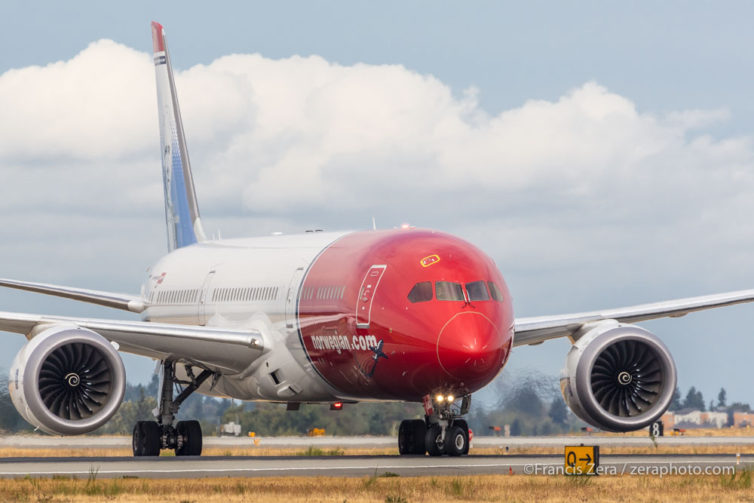
Norwegian flight DY 7131 taxiing after landing at Seattle-Tacoma International Airport. Gotta love those red-headed jetliners.
It was a lovely Seattle morning. The rain that had been forecast was late in arriving, and the plane landed early; everything came together nicely.








